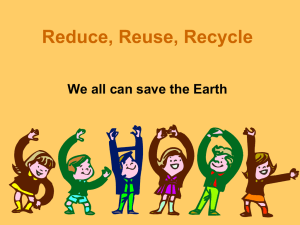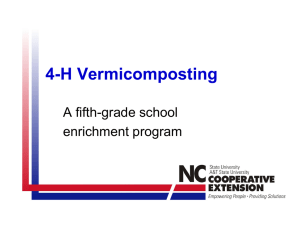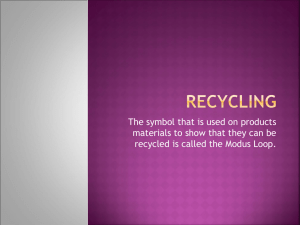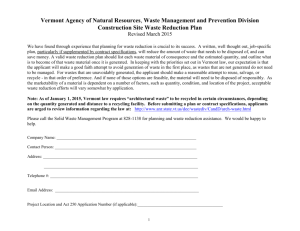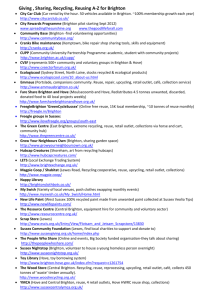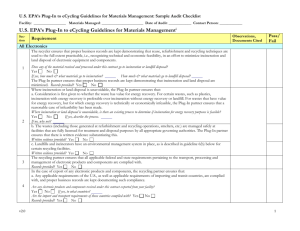consumption and purchasing survey
advertisement
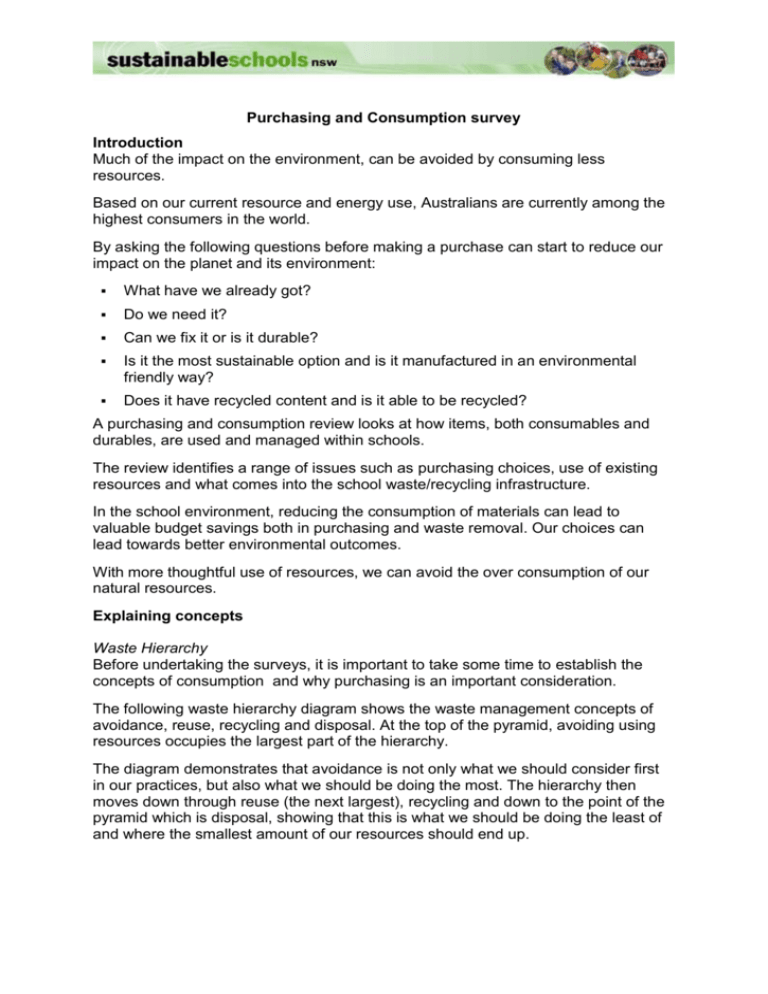
Purchasing and Consumption survey Introduction Much of the impact on the environment, can be avoided by consuming less resources. Based on our current resource and energy use, Australians are currently among the highest consumers in the world. By asking the following questions before making a purchase can start to reduce our impact on the planet and its environment: What have we already got? Do we need it? Can we fix it or is it durable? Is it the most sustainable option and is it manufactured in an environmental friendly way? Does it have recycled content and is it able to be recycled? A purchasing and consumption review looks at how items, both consumables and durables, are used and managed within schools. The review identifies a range of issues such as purchasing choices, use of existing resources and what comes into the school waste/recycling infrastructure. In the school environment, reducing the consumption of materials can lead to valuable budget savings both in purchasing and waste removal. Our choices can lead towards better environmental outcomes. With more thoughtful use of resources, we can avoid the over consumption of our natural resources. Explaining concepts Waste Hierarchy Before undertaking the surveys, it is important to take some time to establish the concepts of consumption and why purchasing is an important consideration. The following waste hierarchy diagram shows the waste management concepts of avoidance, reuse, recycling and disposal. At the top of the pyramid, avoiding using resources occupies the largest part of the hierarchy. The diagram demonstrates that avoidance is not only what we should consider first in our practices, but also what we should be doing the most. The hierarchy then moves down through reuse (the next largest), recycling and down to the point of the pyramid which is disposal, showing that this is what we should be doing the least of and where the smallest amount of our resources should end up. Life Cycle of a Product Investigating the life of a product enables students to gain an understanding of the energy, raw materials and time embedded in the item , whether it is an apple, a piece of plastic or a sheet of paper. Use the life cycle of a product student worksheet to investigate different products in the school, and to assist in developing action plans to avoid and reduce. Surveys The main areas covered in the Purchasing and Consumption review are: 1. Purchasing paper Review the school's paper purchases. 2. Paper Use and Recycling Practices How paper is managed in classrooms, learning areas, staffrooms and offices. See the survey sheet in this section. 3. Food Packaging How many items of food packaging arrive in the school each day ? 4. Storeroom Survey What resources currently exist in the school that can be fixed or utilised? Paper Reuse and Recycling Practices The paper reuse and recycling survey can be the first place where schools can make simple and significant environmental improvements. This review involves counting the number of reuse and recycle boxes in each room at your school. Reuse boxes may have various names and can potentially collect different material. While mainly used for paper, reuse boxes can be used to collect: paper used on one side to be used as scribblers, drafting or note taking scrap paper, magazines, newspaper or cardboard for use in craft or art lessons other materials such as jars, lids, cartons, bottles for use in art, craft, science etc. If recycling is being undertaken in a school, it is quite important to survey the recycling boxes in school areas. A waste survey could also be conducted to check if paper is appearing in the waste stream. Boxes should be clearly labelled and have visible instructions for proper use. Paper Reuse and Recycling Survey Room Is there a Is there a Number recycling reuse & Building box? Size? box? Are they labelled? recycle reuse Are there instructions? recycle reuse Suggested improvements This survey may involve students entering rooms that are in use. Advance notification for teachers is suggested or alternatively teachers (not wishing to be interrupted) may choose to place a sign on the door listing contents or information required by the survey. Storeroom Survey A large variety of items are often found in storerooms - many of which are often broken or not currently being used. The purpose of this survey is to communicate to the staff what resources are available at the school. It also helps to identify different ways to use the items in storage. In the survey, it is useful to consider whether any of these items can be fixed and utilised instead of buying new items. For example, items: to charity or a reuse centre. A storeroom audit involves: To undertake this task, it is useful to know the location of storage in classrooms and learning areas. A location map would be helpful but may not be available. Where access to the rooms involves the use of keys, a teacher, general Assistant or adult with permission to access these rooms is required. Packaging Survey for the school community Survey Date:___________ Reusable food container? Yes No Reusable drink container? Yes No Canteen? Yes Throw away items No Number What items were brought to school or purchased? Chip Lolly Glad Poppers Packets wrappers wrap OtherAluminium PET Muesli Cans bottles Bars etc Paper Purchasing Survey Name_______________ School_______________ Date__________ Purpose: To investigate the type of paper purchased for the school. Research: To establish the origin of the paper and how much is used. It may be easier to hand this to the schools administration before the survey or hand it to the person directly responsible for the schools paper purchasing. If there are other types of paper not on the list below please add them on. Is the product How much is used How much environmentally Type of Paper Product each Year? (in does it cost friendly? reams or sheets). per year? (recycled content, unbleached). White A4 Coloured A4 A3 Other Pads Exercise Books Toilet Paper Paper Towel Art Paper Craft Paper In which Who makes country is it the product? made?
